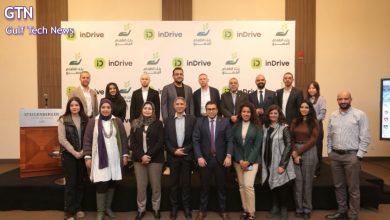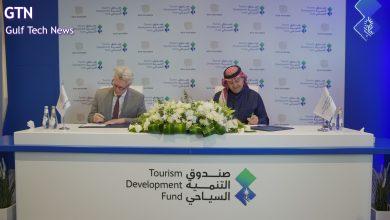Learning from Covid-19 and why we cannot go back to the future
How can we harness the impact that connectivity has had on our lives since the
start of Covid-19? Here, Ericsson President and CEO Börje Ekholm outlines the
consequences that the pandemic has had on our online lives, and why we cannot
go back to pre-pandemic habits.
Through Covid-19, connectivity has become an even bigger part of critical
infrastructure, helping people in an unprecedented way to work, study and
socialize online. Looking forward, governments need to do more to harness the
potential of 5G if we’re both to emerge stronger from the pandemic and tackle
greater challenges such as climate change.
These are two of my takeaways from the World Economic Forum’s three-part 5G
Outlook Series, the final installment of which was recently published and to which
Ericsson, as part of a multi-stakeholder working group, contributed.
Shifting behaviors
A year on from its onset, many of the global behavioral changes stemming from
Covid-19 are clear, not least the move from offline to online domains. Last year,
we could see that consumers’ use of fixed broadband increased by an average of
two and half hours per day, and on mobile by one hour.
In its first 5G Outlook Series report, the World Economic Forum (WEF)
highlighted several activities behind that increased usage: in healthcare, a 490
percent increase in telemedicine urgent care visits; in socialization a 75 percent
increase in online gaming; and in retail, online transactions were up 74 percent
globally. In the world of work, Ericsson’s Mobility Report showed 60 percent of
white-collar workers increased their usage of video calls.
Networks passed the stress test
Despite the sudden and unprecedented changes in traffic patterns and demand,
the networks performed well with operators generally providing enough network
performance. This strong performance was reflected in users’ perceptions, with
83 percent claiming ICT helped them a lot, in one way or another, to cope with
lockdown.
My first key takeaway from the WEF reports is that through Covid-19,
connectivity became an even bigger part of critical infrastructure, helping people
in an unprecedented way to work, study and socialize online. Without the
investments made in 4G and 5G, telemedicine, video calls, gaming – none of
these uses could have been delivered to the extent seen through the pandemic.
No going back to the pre-pandemic status quo
With vaccines rolling out and an end to the pandemic in sight, there is a risk that
society will seek to return to pre-pandemic routines and habits. It is obvious the
world cannot move forward by returning to a pre-pandemic status quo.
If we are to emerge strongly from Covid-19 and tackle greater challenges, such
as climate change, then not only do we need to continue the digital evolution, but
we need to accelerate it with 5G at the forefront.
5G at the forefront of digital evolution
With attributes such as high speed and low latency, and as an enabler of other
technologies such as the Internet of Things and Artificial Intelligence, 5G is
designed to be a platform upon which enterprises can take forward efficient, low-
cost, low emission uses.
This can be seen in factory settings, for example, where 5G uses gather in the
form of automated heating, ventilation, air conditioning, light control and building
management. Many of these 5G uses, the economic and environmental benefits
derived from them, are explored in Ericsson’s 5G Smart Factory.
In a similar vein within agriculture, WEF highlights, there are several 5G use
cases whereby the use of sensors and other connected devices allow farmers to
produce more output whilst consuming fewer scarce natural resources, such as
water.
One such example offered is Agroscope , a center for agricultural research in
Switzerland. The center has deployed real-time sensors that measure soil
moisture, crop growth, weather data and animal movements. These sensors
have allowed farmers to decrease the amount of nitrogen fertilizer use by roughly
10 percent, without any corresponding loss in crop yield.
Broadband and 5G, as the European Commission makes clear, lay the
foundation for the green and digital transformation of the economy, regardless of
whether we talk about transport and energy, healthcare and education, or
manufacturing and agriculture.
Switzerland in focus
Staying with Switzerland, few countries have been as quick to see the potential in
5G and commit. In 2019, Swisscom switched on the first European commercial
5G network, and today 90 percent of the population is covered by 5G.
Now they will see benefits in economic competitiveness with enterprises gaining
first-mover advantages in educational attainment with online learning
strengthened through VR, and they will see benefits environmentally through
reduced emissions.
5G is scalable, and if other countries were to use Switzerland as a template, the
global benefits would be enormous.
World in focus
Looking at a global scale, environmentally, digital technology can accelerate the
reduction of global emissions by up to 15 percent by 2030, while being
responsible for only 1.4 percent of global emissions.
Whilst economically, ‘industry analysts have suggested 5G will add USD3.8
trillion of gross output by 2035, supporting 22.8 million new jobs’.
With rewards, however, come risks. One such risk is the threat of exacerbated
inequality, through varied adoption of digital technology. For example, by the end
of 2026, Ericsson forecasts 3.5 billion 5G subscriptions globally. In North
America, 80 percent of its subscriptions are expected to be 5G, whilst in sub-
Saharan Africa the forecast is only 5 percent.
Given that, by 2030, we forecast that two-thirds of the world’s workforces will
depend on 5G connectivity, it is critical that we work towards closing the digital
skills divide and promote an agenda which ensures digital inclusion, a point
echoed in the report series.
Governments as 5G catalysts
Governments have a long way to go in helping rollout 5G, if we want to use it to
emerge strongly from Covid-19, harness its economic and environmental
opportunities, whilst mitigating inequality. This is my second key takeaway from
the 5G Outlook Series and I would echo WEF ‘s conclusion from their final
report: ‘where governments can work with the communications industry to defray
network roll-out costs, nations are more likely to see widespread 5G benefits
across the economy sooner. Democratizing 5G in this manner is a significant
way of avoiding a 5G-driven digital divide.’
More concretely, instead of focusing on capturing limited spectrum fees and
dragging out rollouts, governments need to see themselves as investment
catalysts. They need to focus on the bigger economic and environmental benefits
which come from spectrum being released quickly, supply maximized and getting
enterprises up and running on 5G.
The spectrum, which is the system that carries data from user equipment to
cellular base stations to the data’s endpoint, also needs to be assigned in a
manner that incentivizes wide and rapid deployment to ensure equitable access.
Furthermore, barriers such as permitting delays, sighting rules, harmonizing radio
frequency exposure values need to go. Doing this will help accelerate the uptake
of 5G.
In conclusion, Covid-19 demonstrated the enormous value of our digital
infrastructure. If society is to emerge stronger from the pandemic and tackle
greater challenges, then governments need to act more as catalysts and unleash
the potential of 5G.
Ericsson is a strategic partner to the World Economic Forum and contributor to
its 5G Accelerator Program which aims to build better connected, more resilient
societies to respond to and recover from Covid-19. Their report series, 5G
Outlook, which is part of the Program, can be accessed here.





